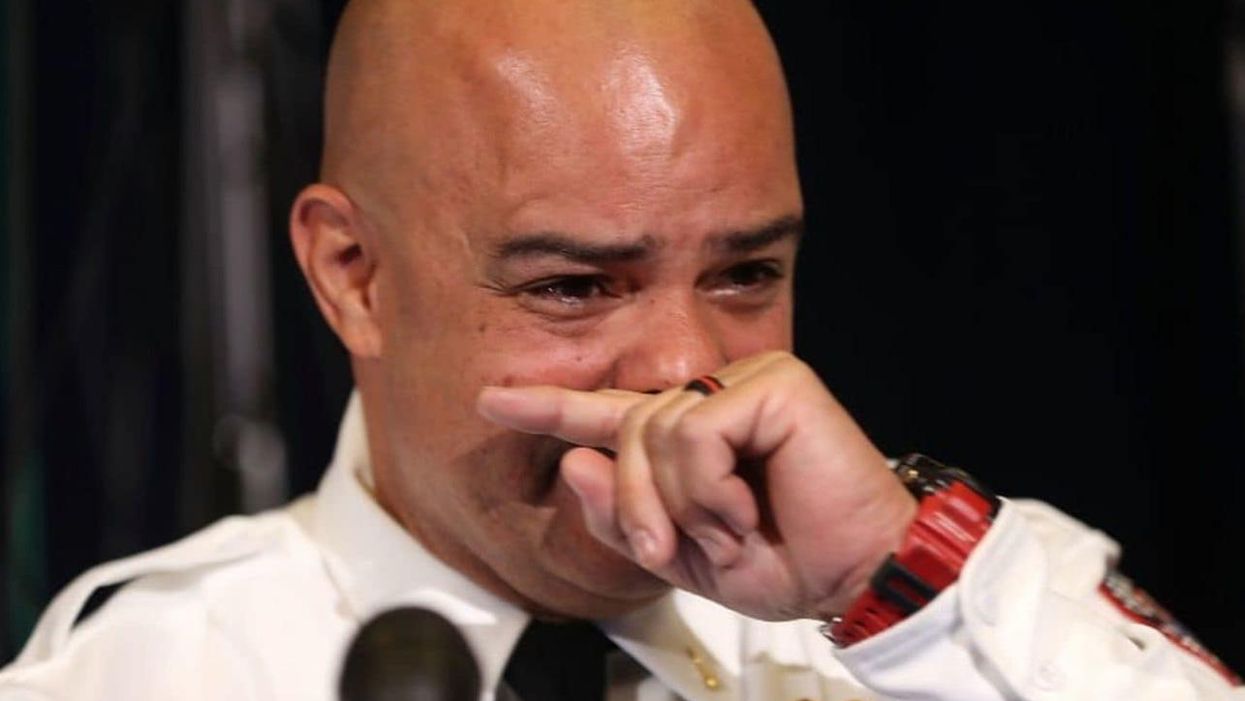News
Alex Horton
Feb 27, 2018

Coral Springs Fire Department Lieutenant Laz Ojeda
The Washington Post
As Madeleine Wilford bled out from multiple gunshot wounds outside Marjory Stoneman Douglas High School, the first responder struggling to keep her alive was faced with a choice.
Coral Springs Fire Department Lieutenant Laz Ojeda could follow guidance to rush the high school student to a hospital 30 miles away, where policy dictates most child patients should go.
The second option: Head for the closer urgent care-focused Broward Health North, about 12 miles away from where a gunman had just killed 17 people on Valentine's Day.
The decision, he told The Washington Post on Monday, had serious implications. Police officers had already mistakenly believed she was dead before they shook her and discovered she was alive. Her blood pressure was dropping and a lung was collapsed. An officer put on a chest seal to block air from entering her chest, but she needed a surgeon to keep her from drowning in blood.
Ojeda was sceptical of an assessment of Wilford's age of 15, so he rubbed her sternum to ask her age.
No response. He tried again.
Wilford awoke that time.
“She came around. She told me she was 17,” Ojeda recounted through tears at an earlier news conference. Broward Health North it was, Ojeda decided there, and the ambulance roared to the waiting trauma team.
“That decision contributed to saving her life,” Ojeda told The Post, relaying what a physician later told the cross-trained firefighter and paramedic.
Wilford, who goes by Maddy, sat four seats down from Ojeda at the Monday news conference, with her father David and two physicians between them.
“I'd just like to say that I am so grateful to be here. And it wouldn't be possible without the doctors and first responders and... all the love that everyone sent,” Wilford told reporters.
Ojeda and Wilford shared an emotional moment on stage with doctors and surgeons who helped save the lives of patients brought in following the mass killing on Valentine's Day in Parkland, Florida.
He spoke about the methodical process to take her in, and in between paramedic jargon, tears streamed from his eyes while he described her fragile condition.
Wilford's story emerged as one of few positive threads from the tragedy, and one that has recast the public's understanding of the emergency response. Speculation and rage spread nationwide when it was revealed an armed school police office failed to enter the school as the killings were still taking place, sparking a probe to determine if other officers also stayed outside. The sheriff's deputy, who has resigned, said Monday that he believed the shooting was taking place outside the building.
“It's hard for me to feel anything but gratitude and thanks for the miracle that's happened with her,” David Wilford, Maddy's father, said, also choking back tears.
Wilford has made a miraculous recovery, said Dr Igor Nichiporenko, the trauma surgeon who received her. Three surgeries were completed on her in 40 hours.
“She is very lucky,” Nichiporenko told reporters. “Because we're talking about large-calibre bullets penetrating through the chest and the abdomen.” He expects her to return to school as early as next week, he said.
Ojeda stressed the collective effort among first responders to get Wilford to a surgeon. The three officers - two with Coral Springs Police Department and one with the Broward County Sheriff's Office SWAT - plugged her with the chest seal before hauling her to the casualty collection point. Ojeda said that was the single greatest act someone other than a physician did to save Wilford's life. “Those officers did the hardest thing,” Ojeda said.
The news conference was not the first time Ojeda reunited with Wilford. He was at the hospital Friday taking another patient in, and was flagged by a doctor who recognized him. Ojeda briefly visited and said she was grateful for his efforts.
“And then,” Ojeda said, “we just went back to work.”
The Washington Post
Top 100
The Conversation (0)













